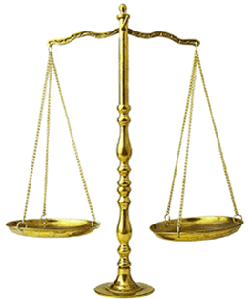THE FOUR BASIC QUALITIES
Yin and Yang, Greek Style
A strong dualism runs through classical Greek science and medicine, which sees all cycles, manifestation and phenomena in the natural world as resulting from the dynamic interplay of opposite yet complementary forces and qualities. Although many such qualities may be observed interacting in Nature, Aristotle concluded that four of them, or two pairs of opposites, were more central and important than all the others: Hot, Cold, Dry and Wet. These he called the Four Basic Qualities.
The Hot / Cold polarity is called active or primary because it drives all change and manifestation and causes or produces the other two qualities.
 The Dry / Wet polarity is called passive or secondary because they are usually caused by the active, primary qualities.
The Dry / Wet polarity is called passive or secondary because they are usually caused by the active, primary qualities.
Both Hot and Dry are qualities that the Chinese would call Yang. They are closely associated with each other because heat evaporates moisture, producing dryness.
Both Cold and Wet are qualities that the Chinese would call Yin. They are closely associated with each other because cold condenses moisture, producing wetness.
Understanding the Four Basic Qualities.
The ancient Greeks had a different understanding of the Four Basic Qualities than we do today. It was less literal, and more figurative and poetic.
The primary, active polarity of Hot / Cold is the easiest to understand, and refers to the relative level of energy or activity present in a system or entity.
Hot denotes a high level of energy or activity. Hot activates, excites, expands, disperses, moves and circulates.
Cold denotes a low level of energy or activity. Cold slows down, sedates, contracts, congeals and obstructs.
The secondary, passive polarity of Dry / Wet is a bit more complex, and has both literal and figurative interpretations.
Literally, Dry / Wet refers to the relative level of moisture present in a system or entity, with Dry denoting a low level or absence of moisture and Wet a high level or abundance of moisture.
When flour is dry, it is a powder that easily disperses. Add water to it, and it sticks together as dough. Therefore:
Dry also means separate, objective, discrete.
Wet also means coherent, subjective, indiscrete.
When a rawhide drumhead is Wet, it gets soft, malleable, flexible and lax in tone. When that drumhead is Dry, it gets hard, stiff, rigid, tight in tone, and withers, or shrinks.
Mix a spoonful of salt into enough water, and it will completely dissolve. When the water evaporates under the hot sun, the salt will start to crystallize and come out of solution. And so, Wet is liquid or fluidic in its behavior, whereas Dry is solid and discrete.
Temperament and the Four Basic Qualities
Greek Medicine is based on the concept of temperament. Temperament is defined as the prevailing balance or makeup of qualities and attributes within a substance, system or entity. Greek Medicine measures conditions of temperament primarily in terms of the Four Basic Qualities.
Greek Medicine defines eight possible conditions of temperament, four of them simple and four compound. In addition, there is a ninth, called balanced or equable temperament.
The four simple conditions of temperament each involve only one of the Four Basic Qualities, as follows:
Hot - Hotter than normal, but neither Wetter nor Dryer.
Cold - Colder than normal, but neither Wetter nor Dryer.
Dry - Dryer than normal, but neither Hotter nor Colder.
Wet - Wetter than normal, but neither Hotter nor Colder.
The four compound conditions of temperament each involve two of the Four Basic Qualities, as follows:
Hot and Dry - Both Hotter and Dryer than normal.
Hot and Wet - Both Hotter and Wetter than normal.
Cold and Dry - Both Colder and Dryer than normal.
Cold and Wet - Both Colder and Wetter than normal.
Conditions of both Hot and Cold can't exist simultaneously, since these two qualities are polar opposites. For the same reason, neither can conditions of Dry and Wet coexist.
Each of the four compound temperaments has associations with a certain element, humor and temperament, or constitutional type.
Working with the Four Basic Qualities
Because the Four Basic Qualities aren't static, but rather always changing, we can work with them. Here are a few simple, basic rules for working with the Four Basic Qualities:
Like increases like. If we wish to increase a certain quality in the organism, we use medicines and treatments that have that quality.
Opposites balance. If we wish to bring an excessive or aggravated quality back into balance, we use medicines and treatments that have its opposite yet complementary quality.
Heat produces dryness. Moderate amounts of heat, applied over a short period of time will only increase heat and dissipate excessive cold. Intense levels of heat applied over a long period of time will also evaporate moisture, producing dryness.
Cold condenses moisture. Moderate amounts of cold applied over a short period of time will only cool down the body and disperse excessive heat. Intense cold applied over a long period of time will also condense moisture, producing wetness.
















